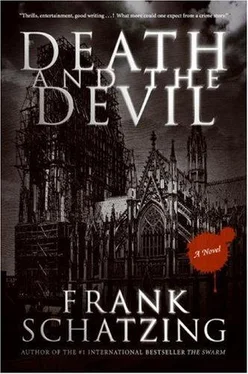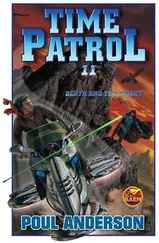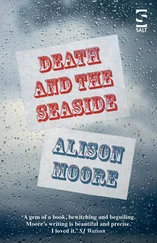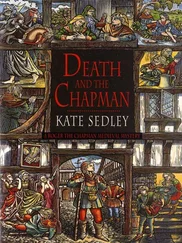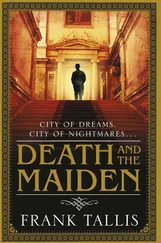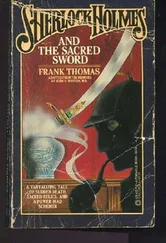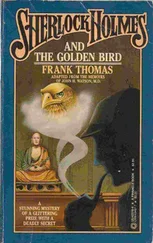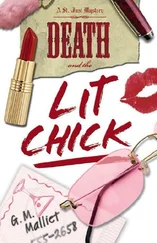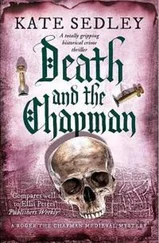Urquhart was not in the procession. Jaspar felt foolish at the idea of running on in front, like a court jester, to gawp at the buildings. He looked around. It was getting more and more crowded. He tried to find Jacob.
What a fool he’d been to trot off like that, following a stupid idea. Annoyed with himself, he pushed his way through the onlookers to get back to Jacob.
“Listen,” he heard a ragged woman say to the girl she was carrying, “listen to the holy men singing. That’s the choir.”
“The choir,” the girl repeated.
The choir—
The cathedral choir! It struck Jaspar like a bolt from the blue.
He groaned. He felt a surge of nausea. Using fists and elbows this time, he started to force his way back through the crowd.
Compared with what was supposed to become the most sublime church in Christendom, the choir appeared fairly modest. Gerhard had only been able to complete the ground floor with the ring of chapels around the apse and a large part of the adjoining sacristy to the north.
Compared, however, with all the other buildings in Cologne, the result was already colossal. The gigantic semicircle of the chancel joined onto what was left of the old cathedral, so that one had to pass through it to get to the interior of the new building. It made a curious picture. A few months before the foundation stone for the new cathedral had been laid, the old one, a massive basilica over a hundred yards long with chancels and transepts to the east and west, had burned down. Only the western half had been temporarily rebuilt, so that the old church looked as if it had been cut right through the middle with a blow from a huge sword. What began beyond it was not only a new house of God, but a new age.
Jacob stood and let his gaze wander over the airy structure of the scaffolding. High up he could see cranes, windlasses, and tread wheels.
It was immediately obvious that what he was looking at was not a simple semicircle. The chancel was in the shape of a horseshoe and it was only the rounded end of the horseshoe, where the chapels were, that was roofed over. When Urquhart had suddenly seemed to come from nowhere, he had not appeared by magic, he had climbed up the open interior of the horseshoe, while Gerhard had gone along the outside. He had not been waiting on the cathedral, but inside .
But how should a man who knew a lot about stealing apples and nothing about architecture be expected to realize that? Jacob had simply assumed the whole building was covered by a single, continuous roof. Instead, the interior was open to the sky. Which meant that from the top one could see, depending where one was, into each of the chapels around the apse and, with a little care, not be seen oneself. One could see—and shoot—into the chapels.
Jacob stepped under the scaffolding and laid his forehead against the cool stone. The mass was due to start at prime, at six of the clock. Conrad would enter the central chapel to deliver his sermon. Then what Jacob had prophesied would happen, only not in the street, but in the cathedral. Conrad would fall to the ground, a bolt through his heart, and no one would think of looking up. They’d search for the assassin in the crowd, while Urquhart made his escape over the roof and the outside scaffolding.
Jaspar had told them Conrad wanted to be buried in the central chapel. It looked as if he was going to die there, too. There was less than an hour to go.
Should he see if he could find one of the sheriffs? But whom could he trust, when even the archbishop’s secretary turned out to be a traitor?
One hour.
Jacob caught his fingers starting to massage the bridge of his nose, as if he were Jaspar, the thinker. When would Urquhart climb the wall and where would he take up his position? Then he realized the murderer had no choice. To be able to fire into the central chapel, he had to be at one or the other of the ends of the horseshoe. But he couldn’t make his escape over the southern facade because that would take him into the cathedral precinct and past the guards outside the archbishop’s palace. To the north, on the other hand, was Dranckgasse, running along the cathedral building site. A much better escape route.
At the end of the north wall, then. That’s where Urquhart would be waiting to kill Conrad. Unless someone tried to stop him first.
Jacob looked up again. He was standing at the side of the sacristy, where the curve of the apse began. Right in front of him was a ladder pointing upward, almost as if Providence had led him to the right place to climb up and sacrifice his life.
His life. Was that where it was all heading?
Tentatively he placed his hands on the vertical ladder that led to the lower platform. Until two-thirds of the way up the choir wall the structure of beams, sturdy reeds, and planks had been kept to the minimum necessary to allow workers to reach the upper areas. Work on the lower parts was largely completed. Higher up, on the other hand, delicate work was being done on the tracery of the windows and the supports began to get stronger, rising above the stonework in preparation for the next stage on the way to heaven.
Like the Tower of Babel.
Why not run away after all?
Before he had completed the question to himself, Jacob was already climbing. There was nobody to see him. The whole of Cologne was still watching the procession. He might find some tool up there, an axe or a crowbar, he could use to defend himself when Urquhart arrived. The murderer would hardly expect to find anyone else there. Jacob could hide in one of the tread wheels or behind a crane and attack him from behind. That was the coward’s way, true, but being courageous might very quickly mean being dead. Trying to defeat Urquhart with courage was pointless.
As he climbed higher, Jacob was astonished at how huge the windows were in reality. Seen from street level, they appeared to rise to a slender, delicate beauty; from close up they looked broad and massive, the buttresses almost fortresslike. In the dim light the glass, although colored, was a black skin with veins of lead running through. He continued to climb until he reached the first walkway. He was already looking down on the roofs of the houses around.
The next ladder was right in front of him. He climbed it slowly, rung by rung. Jacob had not intended to spend longer than necessary on the scaffolding, but he was fascinated by everything he saw. Just above, the pointed arches at the tops of the windows began, filled with magnificent tracery that seemed to render the heavy stone weightless. He almost felt he could abandon the foot-and handholds to be borne up by the soaring lightness of the concept on which this church of churches was based—
Gerhard’s concept. Gerhard had not soared. He had fallen.
Jacob tore his eyes away from the architecture. His hands clasped the next rung, and the next, and the next. He reached the second level and continued to climb. The edge of the roof was getting closer.
All at once he started and nearly let go, but the thing that had suddenly emerged from the stone beside him was only a grotesque gargoyle. Nothing to worry about. Not yet.
Then he had reached the top of the wall and was looking out in wonder over the great segmented curve of roofs on the chapels, gently sloping gable roofs, almost impossible to walk on. For a brief moment Jacob was reminded of a range of rolling hills with a deep, gloomy chasm yawning in the middle. Above it stretched the further landscape of the walkways and platforms of the scaffolding. Almost unreal in the distance, the towers of the old cathedral tried to assert themselves, but from this perspective they were nothing but sacred toys.
Jacob quickly climbed the last rungs to stand on the top of the scaffolding. From here narrow walkways and platforms led to all parts of the chancel. There was nobody to be seen. Some distance away, at the northern end, he could see two tread wheels, each large enough to take two men, one beside the other. He would hide in one until Urquhart came. Poking out from behind the wheels was a low, crudely made chest. Jacob hoped it was used to keep tools in. Without some kind of weapon he might as well go straight back down.
Читать дальше
